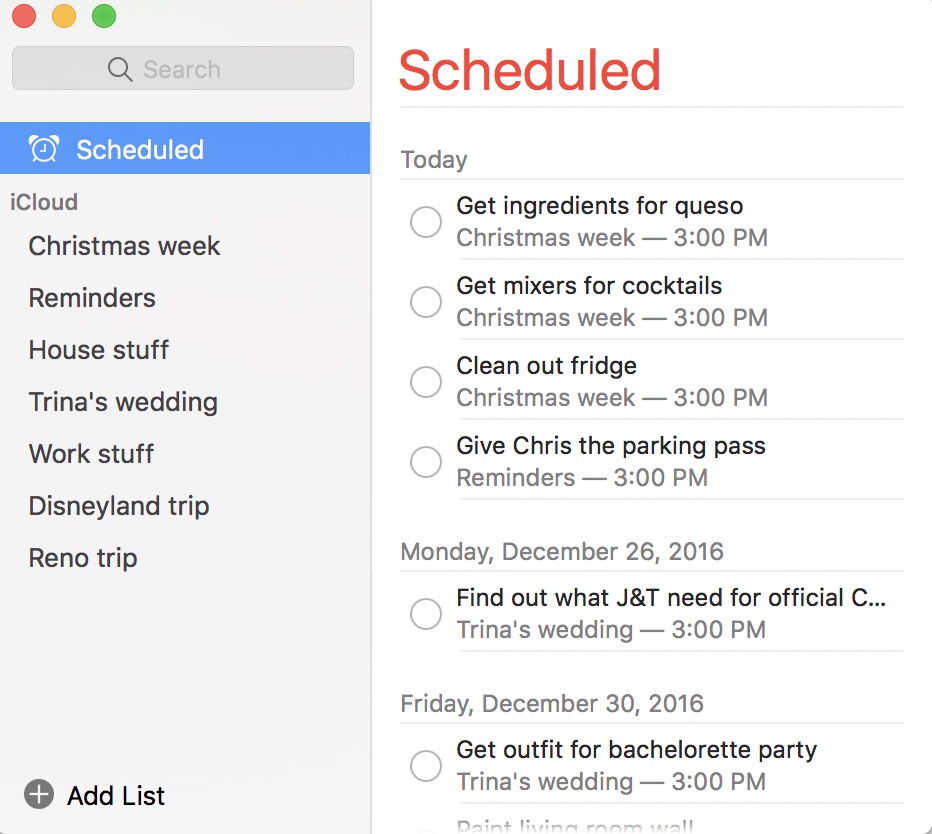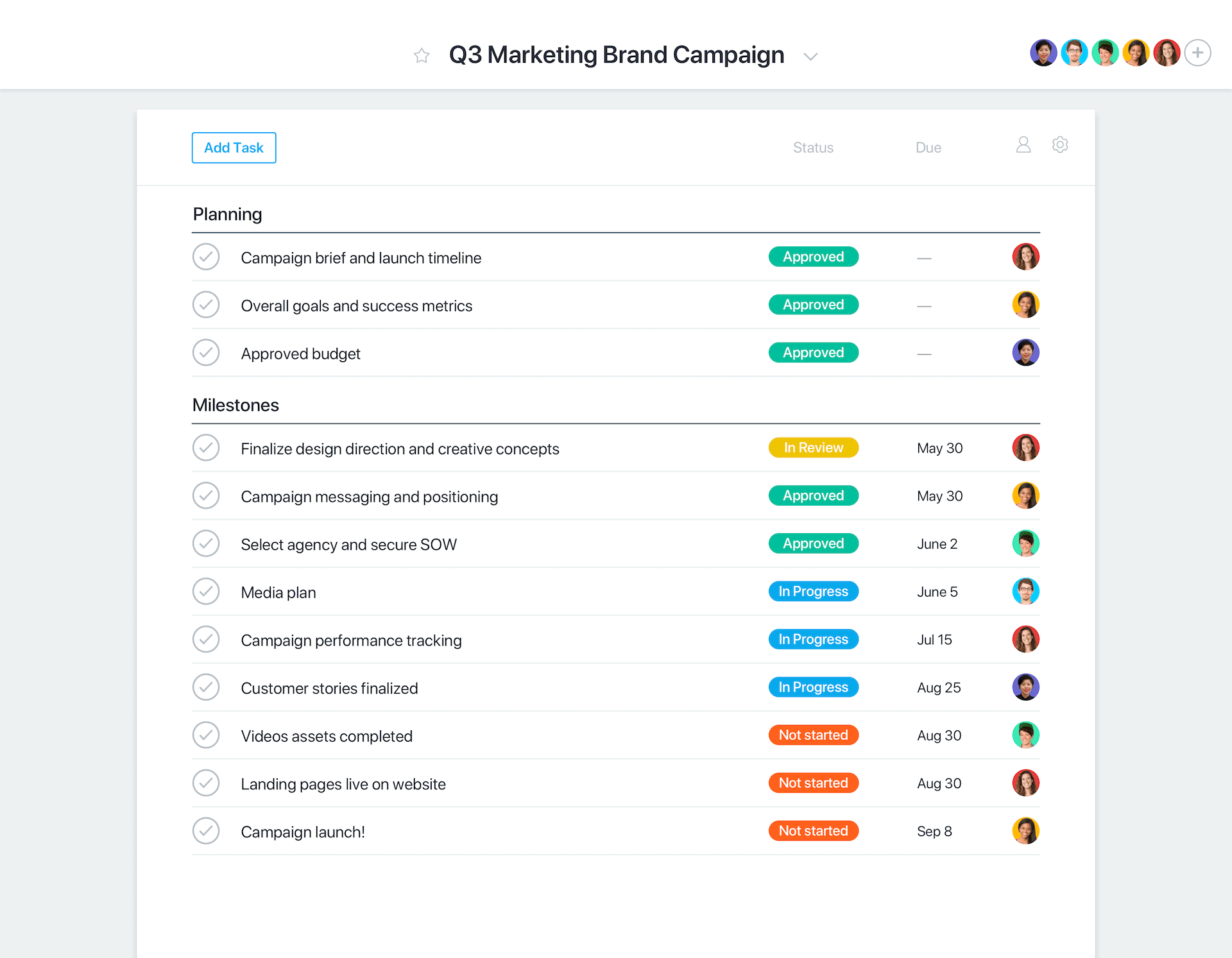2020. 3. 25. 16:58ㆍ카테고리 없음
Not too long ago, the main option for task management on the Mac was iCal’s To Do list. (Note I said option, not solution.) For serious task management, the Mac was a barren wasteland. Looking through the Mac and iOS App Stores, there seem to be more task management tools than fart apps.
- Review)how To Use Lil Todo-task Manager App For Macbook
- Review)how To Use Lil Todo-task Manager App For Mac Download
Those tools range from rudimentary checklists to gargantuan multi-feature, multi-platform systems. I know because I’ve tried a lot of them. For users, this newfound abundance of riches finally makes it possible for everybody to use their Macs (and iPhones and iPads) to manage their tasks and even, perhaps, get a little work done. But while there are some software categories in which there is one clear best-in-breed solution, task management isn't one of them. Picking just one task manager as the best solution for everyone would assume that everybody has the exact same task management needs—which they don’t. The choice is different for everyone. Here’s how I made mine.
What I need There was a point in my life when my task management system was a napkin with a few items on it each day. It worked brilliantly then. Life, however, got more complex, and that meant I needed something more. These days, I’m running at full tilt all the time: I have to keep track of my legal practice, books I'm writing, speaking engagements, and kids, and I still need to take out the trash every Thursday night.
I want to throw thousands of tasks at my to-do app and expect it to keep up. Moreover, I need more than a big list. My task manager needs to be smart enough to show me just what I need to see to get work done right now, and shield me from all the extra noise that, if I saw it, would push me into an existential crisis. That means I need a manager with several specific features: The details I need a to-do manager that tracks the basics, such as start dates and due dates.
Because I want to offload as much of life’s tedium from my brain to my Apple devices as possible, it also needs support for repeating tasks. Seamless sync Next, I need to be able to manage tasks from both my desk and the road. As a result, any task manager I use needs to be available on the Mac, the iPad, and the iPhone. It is not enough that the app simply exist on multiple platforms: Each version needs to reliably and wirelessly synchronize its database with every other version. If I add five tasks while sitting at my Mac in my office, they need to be on my iPhone by the time I get to the client meeting. Quick capture New tasks occur to me at the most inconvenient of times.

Because my ideas seem to be equipped with two-minute fuses, getting those ideas out of my brain and into my task management system immediately is critical. If I don’t immediately capture an idea, it quickly fades into oblivion. Capturing tasks needs to be simple and efficient on all platforms, so when I suddenly realize I need to patent that potato chip-powered perpetual motion machine, I can do it wherever I am. Easy review While a lot of task managers can provide the baseline functions I’ve covered so far, I also need something most task management apps can’t provide: the ability to systematically review my tasks and their related projects. A review is nothing more than stopping and examining a project to see what tasks are still remaining for it. A lot of times during a review, I’ll discover that the project has changed direction or may no longer be necessary.
As simple as this sounds, regularly reviewing projects is one of the primary reasons I don’t screw up everything in my life. Email integration New tasks often arrive by email.
A client may write me, for example, asking that I call someone else to research something. I need a task manager that integrates with my mail apps so I can easily create new tasks based on such email messages. Those are the main things I need.
I also like apps that are designed consistent with Apple's aesthetic of elegant simplicity. And because task management is so important to me, I need software with better support than a dodgy email address on the other side of the planet. I need an 800 number with ninjas on the other end to help me through the rough spots. My solution Going through that list of requirements, I’ve found only one to-do app that gives me almost everything I need: ( ). (Disclaimer:, which develops OmniFocus, sponsors my podcast the.
I was, however, an OmniFocus user long before they began that sponsorship and that support has nothing to do with why I use their products.) OmniFocus keeps track of the task details I need—start date, due date, recurrence schedule, and estimated time it’ll take to complete. It has separate versions for the Mac, iPad, and iPhone, each one with its own interface and features that are appropriate to that device. The Mac version lets you manage multiple tasks simultaneously and integrates with Apple Mail, the iPad version includes project review support that is perfect for Monday morning at the coffee shop, and the iPhone lets you use Siri to dictate new tasks straight into your phone. OmniFocus is the only task management application I’ve found that gives me the fine control over project review that I want. I can set timers, ranging from a few days to twelve months, on all of my task management projects. For instance, a project that involves managing a dormant client account only requires review every six months, while managing witnesses for an upcoming trial requires review every three days. Using either the OmniFocus Mac or iPad app, I can get a list of all projects that are due for review.
Going over that list every morning has saved my bacon many times. OmniFocus integrates with Apple Mail on the Mac. With a simple key combination, I can create a new task and copy the email text into the task’s notes field. Moreover, OmniFocus for Mac also creates a link to the original email in the task so I can archive the email and later open it by clicking the link in OmniFocus for Mac (and avoid the drudgery of hunting down the original message in Mail).
Review)how To Use Lil Todo-task Manager App For Macbook

Review)how To Use Lil Todo-task Manager App For Mac Download
When I decide I need to respond to an email in five months and three days, I create a task and it disappears into my OmniFocus database until the designated date. When I then send that email on exactly the right day, it completely freaks out the recipient, which is kind of fun. One size does not fit all Now that I’ve explained why I use OmniFocus, I need to acknowledge that it isn’t for everyone. As I said at the beginning of the story, there is no one task manager to rule them all.
For example, OmniFocus lacks some to-do tools that I don't need but other users do. For example, while you can flag a particularly important task with a star in OmniFocus, the program does not support any kind of hierarchical prioritization (high, medium, low, and so on) or alphanumeric priority rankings. I have a friend who spends time every morning assigning each of his approximately 50 tasks a number order of priority.
Is washing the dog number 13 or 14? I think it’s nuts, but it works for him. Also, there is no OmniFocus app for Microsoft Windows, nor is there a Web-based application.
(There is a subscription Web service, that's compatible with Omnifocus, but it is not supported by The Omni Group.) On those rare occasions when I find myself in front of a Windows PC, I use OmniFocus on my iPad. But if you spend most of your time in front of a Windows PC, Omnifocus won’t work for you. (You may want to consider one of the many Web-based task management solutions, such as.) My final advice about choosing and implementing a task management system is to be careful. No other productivity tool enables needless tinkering as effectively as a to-do app. I recommend you pick a task system as sophisticated as you need it to be, but not one bit more complex than that. It is just too easy to spend hours getting your to-do list just so and not actually accomplishing any of the tasks on it. If a task management system is too distracting or fiddly, find something else.
After all, the goal of task management is to complete, not manage, tasks. David Sparks is a practicing attorney, editor of the, co-host of the, and author of (in addition to Paperless ) (Wiley, 2011) and (Wiley, 2011).
If you have just switched from Windows to Mac you may find out that most key shortcuts don’t work on Mac. For example, when an application crashes on Windows, a command Ctrl-Shift-Esc is used to bring up the Task Manager and quit the offending process. What about a Mac? How does one kill such processes whenever Safari or Mail crashes and locks the machine up?
One of the methods is to click the Dock icon and select “Force quit.” But what do you do when the Dock won’t pop up? This blog post will explain the Mac equivalent of Task Manager and how to view running processes in macOS.
How to open Task Manager on Mac? Task Manager = Activity Monitor Firstly, we would like to mention that the equivalent of Task Manager on Mac is Activity Monitor. Activity Monitor lets you easily view active processes that are running on your Mac, manage them, and even quit tasks or applications. Often even one application or running process can significantly degrade your Mac’s performance. How do we identify such a program among a dozen apps running in the background? Find Activity Monitor in Launchpad.
On Activity Monitor you can monitor many parameters of the system such as:. CPU load. RAM memory.
Energy used. Disk space. Network monitoring You will instantly be able to identify the process that is consuming too many resources of macOS. How can you Force Quit on Mac?
A list of running programs can be also viewed in a “Force Quit” dialogue. This can be accessed by a simple keyboard shortcut Command + Option + Escape, or through the Menu → Force Quit. Use Terminal. to view a list of running processes.
For those who prefer working with Terminal, there are simple commands to view the list of running programs. Just open the Terminal and type only one word: Top If you need to view a list of the most voracious applications that consume the most bytes, sort them by CPU: top -o cpu Sort applications by memory usage: top -p size.Read in our previous article. Monitor Memory Usage with Memory Cleaner Memory Cleaner is a free utility to clear inactive RAM memory. With the app you can get access to memory usage right from the menu bar. The app also allows you to kill or stop running applications. As you can see, there are various equivalents of Task Manager on Mac.
Activity Monitor is one of them. It is built-in utility that is used by most Mac users. However, if you want to monitor RAM memory usage and clear inactive RAM, we would recommend below. See more. Prev:. Back:. Next: Related entries.